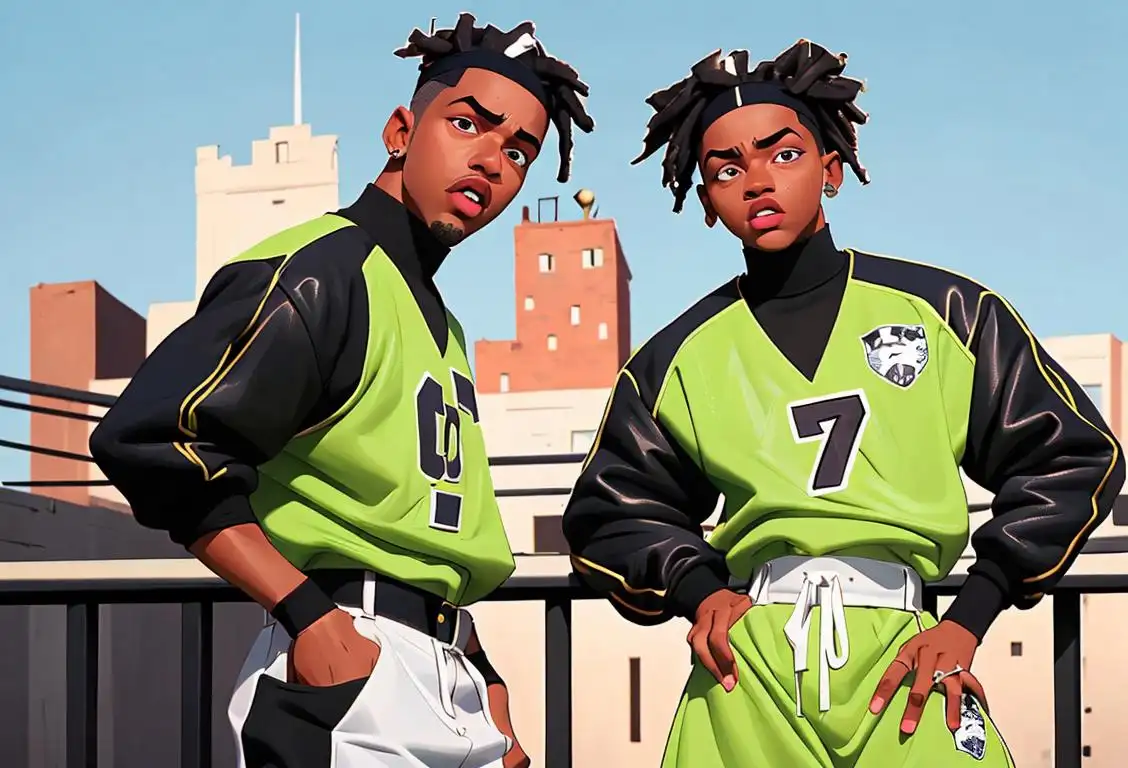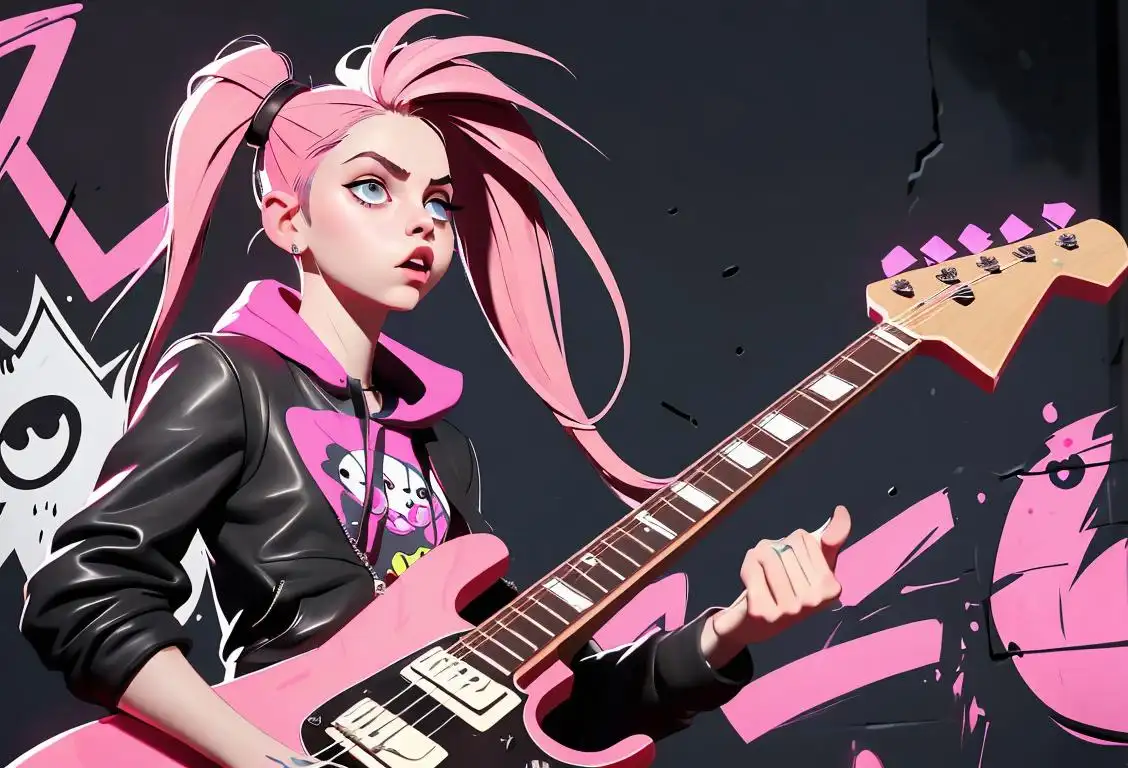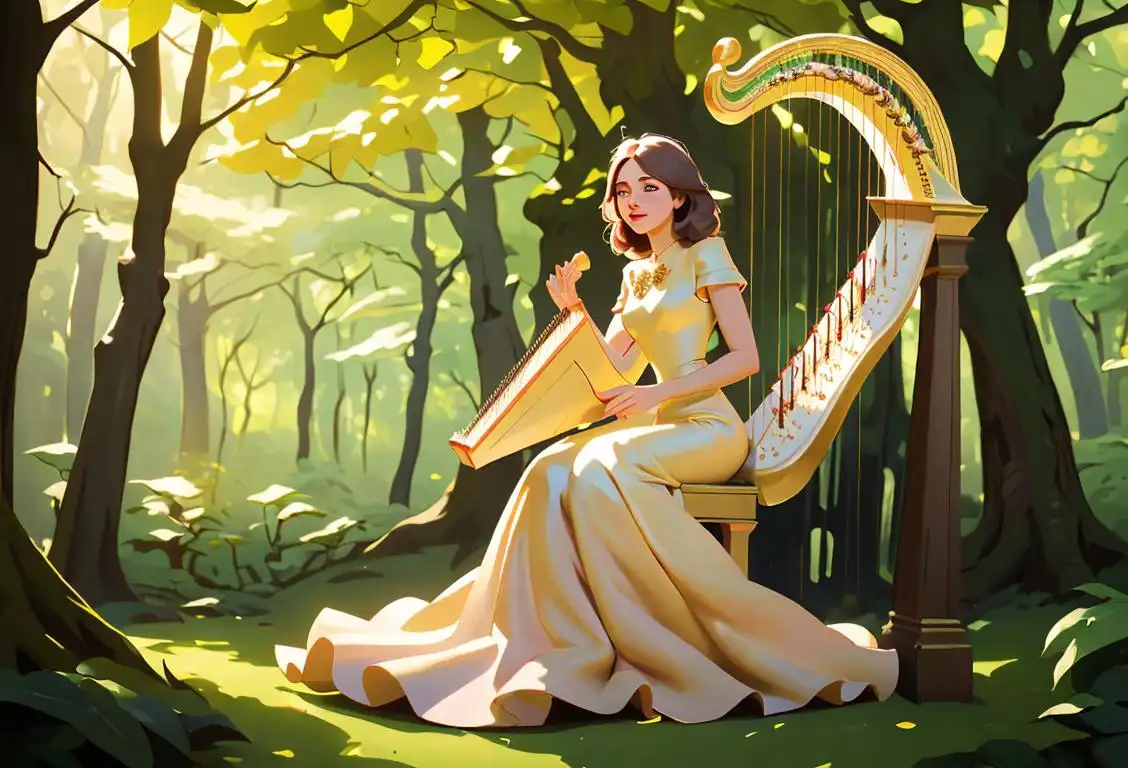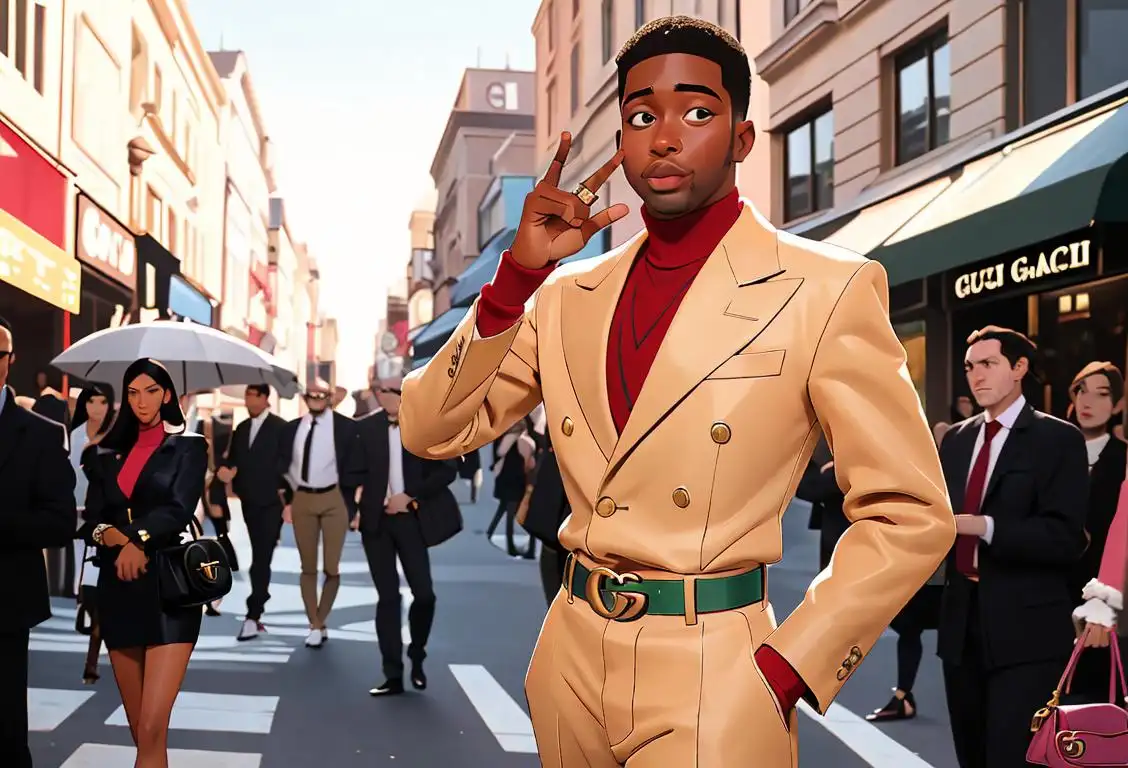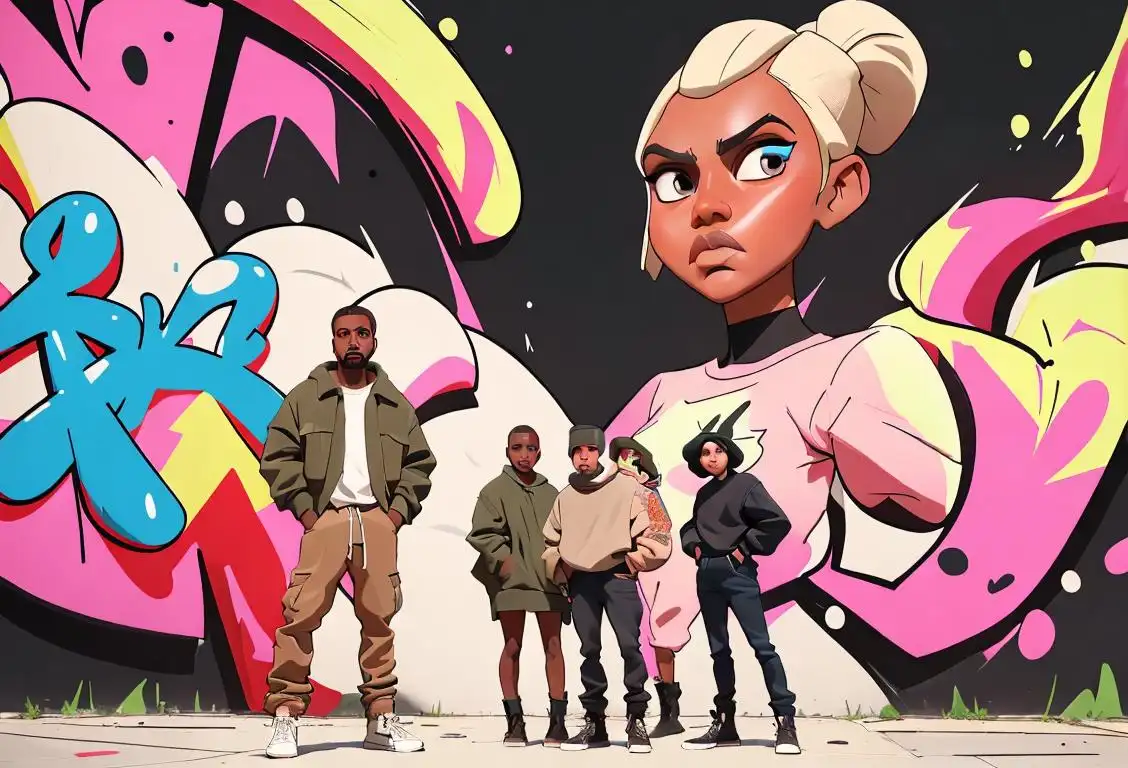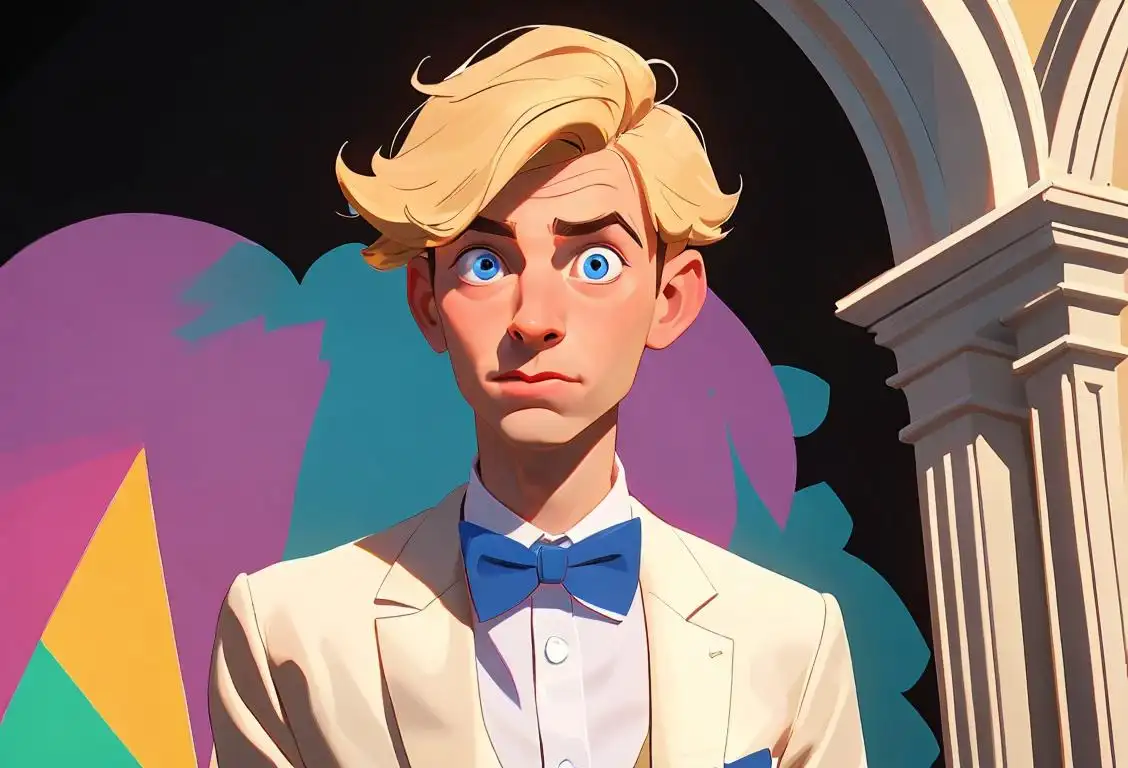National World Goth Day
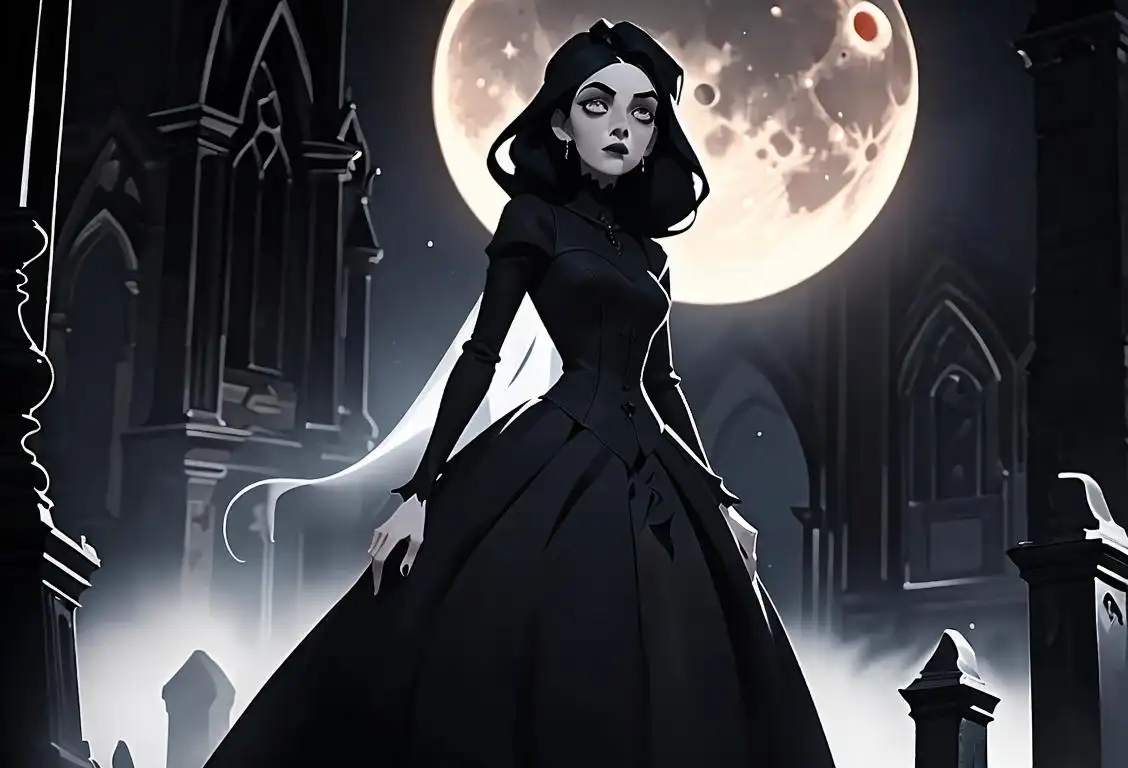
Welcome to the dark side, my friend! National World Goth Day is a celebration of all things goth, from black clothes and pale makeup to hauntingly beautiful music. Whether you're a longtime goth enthusiast or just curious about the subculture, this is the perfect day to embrace your inner darkness. Join us as we dive into the fascinating history of National World Goth Day and explore what makes goth culture so captivating.
When is World Goth Day?
It's national world goth day on the 23rd May.
The Origins of National World Goth Day
Let's set the stage in England, the birthplace of goth subculture. Back in the late 1970s and early 1980s, a music scene emerged in the UK that blended punk rock with a dark and brooding aesthetic. Bands like Siouxsie and the Banshees, The Cure, and Bauhaus became the soundtrack for a growing community of goths.
In 2009, two British DJs, Cruel Britannia and Martin Oldgoth, decided to establish a day to celebrate goth culture. And thus, National World Goth Day was born. It's held annually on May 22nd to coincide with the birthday of Ian Curtis, the lead singer of Joy Division, a band considered influential in the goth genre.
How to Celebrate National World Goth Day
If you're ready to channel your inner goth, here are some ideas to make the most of this special day:
- Dress in black from head to toe and embrace your inner darkness.
- Listen to your favorite goth bands or discover new ones. The Cure, Bauhaus, and Sisters of Mercy are excellent places to start.
- Create a gothic-inspired playlist and share it with your friends.
- Explore goth fashion and experiment with different styles, from Victorian goth to cyber goth.
- Visit local goth clubs or attend goth-themed events in your area.
- Watch classic gothic movies like "The Crow" or "Edward Scissorhands".
Did You Know?
Contrary to popular belief, goths are not nocturnal creatures that only come out at night. They have normal lives just like you and me, except with a little more eyeliner and a lot more black clothing. Embracing goth culture is a way for people to express their individuality and find solace in a community that celebrates the beauty of darkness.
History behind the term 'World Goth'
Late 1970s
Birth of Gothic Rock
The term 'World Goth' originated from the subculture known as goth or gothic, which emerged in the late 1970s as a distinctive music genre. Influenced by post-punk and early punk rock, gothic rock bands like Bauhaus, Siouxsie and the Banshees, and The Cure helped shape the sound and aesthetic of the movement.
1979
Birth of Gothic rock
The term 'world goth' has its roots in the emergence of gothic rock music in the late 1970s. Gothic rock, also known as goth rock, is a subgenre of post-punk music that originated in the United Kingdom. Bands like Siouxsie and the Banshees, Bauhaus, and The Cure popularized this dark and atmospheric style of music, characterized by haunting melodies, introspective lyrics, and a brooding atmosphere.
1979
Birth of the goth subculture
The term 'world goth' traces its origins back to 1979 when the goth subculture emerged in the United Kingdom. Inspired by bands like Bauhaus and Siouxsie and the Banshees, goths embraced a dark, romantic aesthetic characterized by black clothing, pale skin, and dramatic makeup. Goths were drawn to themes of melancholy, Victorian fashion, and an appreciation for all things macabre.
1979
Birth of Gothic Rock
Gothic rock emerged in the late 1970s as a subgenre of post-punk music. Bands like Bauhaus, Siouxsie and the Banshees, and The Cure defined the dark and melancholic sound and aesthetic of the genre. This step marked the birth of 'world goth' as an umbrella term for gothic culture that extends beyond music.
1980
Emergence of post-punk music
In the year 1980, the term 'world goth' was yet to be coined, but the foundation was laid with the emergence of post-punk music. Influenced by bands like Siouxsie and the Banshees, The Cure, and Bauhaus, post-punk was characterized by dark, atmospheric, and introspective music. This genre provided a breeding ground for the gothic subculture to take shape.
1979
Birth of Gothic Rock
Goth culture originated in the late 1970s with the emergence of Gothic rock. Bands like Bauhaus, Siouxsie and the Banshees, and The Cure helped define this genre, characterized by dark, introspective lyrics and moody atmospheric music.
1979
Emergence of Gothic Rock
In 1979, the term 'world goth' can be traced back to the emergence of Gothic rock, a subgenre of post-punk music. Bands like Bauhaus, Siouxsie and the Banshees, and Joy Division heavily influenced this genre with their dark and brooding sound. The music drew inspiration from Gothic literature, horror films, and themes of melancholy and introspection. Gothic rock quickly gained popularity and attracted a dedicated following.
1979
Birth of goth subculture
The goth subculture emerged in the late 1970s, primarily in the United Kingdom, with its roots in the punk rock and post-punk movements. Goths embraced a darker aesthetic, combining elements of music, fashion, and literature to create a unique subculture that expressed individuality and nonconformity.
1985
Birth of the Goth Subculture
The term 'world goth' originates from the goth subculture, which emerged in the late 1970s and early 1980s as a significant offshoot of the punk rock movement. In 1985, the goth subculture gained momentum and a dedicated fanbase worldwide. Goths embraced dark fashion, gloomy aesthetics, and music genres such as gothic rock and post-punk. This subculture created a unique identity and community, fostering a sense of belonging amongst its members.
1979
Birth of the Gothic subculture
The term 'Goth' originated in the late 1970s as a label for a new subculture emerging within the punk rock scene. It was first used by the music journalist and founding member of the band Bauhaus, Ian Astbury, to describe a band that would later become influential in the development of Gothic rock. At this stage, 'Goth' mainly referred to a style of music rather than a broader cultural movement.
1979
The Birth of Gothic Rock
The term 'world goth' originates from the music genre known as gothic rock. In 1979, the band Bauhaus released their song 'Bela Lugosi's Dead,' often considered the starting point of gothic rock. The dark and atmospheric sound, with haunting melodies and introspective lyrics, captured the attention of alternative music lovers. This marked the beginning of a subculture that would later encompass the term 'world goth.'
1982
Goth Subculture Takes Shape
The goth subculture started to solidify with the release of the album 'Pornography' by The Cure in 1982. The album's dark themes and stark imagery resonated deeply with listeners, and it became an influential record within the goth community.
Early 1980s
Expansion of Gothic Subculture
During the early 1980s, the gothic subculture expanded beyond music to encompass various art forms such as literature, fashion, and visual arts. While the term 'goth' was initially used to describe fans of gothic rock, it gradually encompassed a broader community of individuals drawn to the dark and macabre aesthetics.
1984
World Goth Day origins
World Goth Day, also known as World Goth Day or World Goth Day, was first celebrated on May 22, 1984. The day was created to honor the goth subculture and its global impact. It aimed to provide an opportunity for goths worldwide to celebrate their identity and showcase their talents and creativity.
1990
Global spread of the goth subculture
Throughout the 1980s, the goth subculture gained popularity in various parts of the world, including the United States, Germany, and Australia. Goths formed tight-knit communities and shared their love for gothic music, literature, and fashion. This widespread adoption of goth aesthetics and culture led to the formation of a global network of goths who saw themselves as part of a larger subcultural movement. As a result, the term 'world goth' began to be used to refer to the international goth community.
1980s
Expansion of Gothic Subculture
During the 1980s, gothic subcultures emerged across the globe, drawing inspiration from the music and aesthetic of gothic rock. Bands like Siouxsie and the Banshees, The Cure, and The Sisters of Mercy gained popularity, bringing gothic culture into the mainstream. Gothic fashion, characterized by dark attire, pale complexions, and extravagant hairstyles, became an integral part of the subculture. The term 'world goth' started to be used to encompass this increasingly global movement.
1982
The Batcave Club Opens in London
In 1982, the iconic Batcave Club opened its doors in London. This club became a mecca for the emerging Goth subculture, providing a gathering place for like-minded individuals dressed in black lace, chains, and dramatic makeup. The Batcave Club played an integral role in the development and dissemination of the Goth aesthetic and allowed the World Goth movement to flourish.
1984
Gothic Subculture Spreads
The gothic subculture gained significant popularity in the mid-1980s. As gothic music and fashion became more visible and influential, the term 'world goth' started being used to describe the global reach and growing community of goths. The term encompassed not only music but also fashion, literature, art, and a shared appreciation for the macabre.
1980s
Spreading darkness in fashion
In the 1980s, the gothic music scene started to influence fashion, giving rise to a distinctive gothic aesthetic. Goths embraced dark and dramatic clothing, often favoring black attire, lace, corsets, and Victorian-inspired fashion. The term 'world goth' began to be used colloquially to refer to those who embraced this subculture and its associated style.
1996
The Global Spread of Goth
By 1996, the goth subculture had spread across various countries, transcending borders and cultural differences. The term 'world goth' was coined to encompass the international reach and influence of the goth movement. Goths from different parts of the world began connecting through fanzines, music, and social events, allowing for the exchange of ideas and contributing to the growth of the subculture on a global scale.
1982
Influence of literature and film
During the early 1980s, Gothic music and fashion started to take inspiration from Gothic literature and horror films. Bands like Siouxsie and the Banshees and The Cure incorporated elements of Gothic literature, such as dark romanticism and Victorian aesthetics, into their music and image. This fusion of music, fashion, and literature helped solidify 'Goth' as a distinct subculture.
1984
Birth of the term 'world goth'
It was in 1984 that music journalist Mick Mercer first used the term 'world goth' in his review of the band Specimen. The term was used to describe the emerging subculture that drew inspiration from gothic literature, fashion, and art. 'World goth' encompassed individuals around the globe who identified with the gothic aesthetic and ethos.
1990s
Internet Culture and Global Connection
With the rise of the internet in the 1990s, gothic subcultures found a new platform for connecting and expressing themselves globally. Online forums and social media allowed goths from different countries to share their interests, recommendations, and experiences. The term 'world goth' became even more relevant as it symbolized the worldwide nature of the subculture, emphasizing the unity and shared identity among gothic individuals across the globe.
2000
Online Communities and World Goth Day
With the rise of the internet in the late 1990s and early 2000s, goths found a new platform to connect and express themselves. Online communities, forums, and social media groups dedicated to goth culture flourished. In 2000, World Goth Day was established, bringing together goths from around the world to celebrate their shared interests and countercultural identity. This annual event helps promote understanding and awareness of the goth subculture globally.
1999
World Goth Day is born
The term 'world goth' gained further recognition and celebration on World Goth Day, which was established in 1999. Observed annually on May 22nd, World Goth Day aims to promote goth culture and celebrate its influence across the globe. This day encourages goths and goth enthusiasts to express their individuality, explore gothic arts and music, and foster community.
2008
Official recognition
In 2008, World Goth Day gained official recognition as a national day. The day gained popularity and began to receive media attention, leading to increased awareness and participation. Various events and activities were organized globally, including concerts, club nights, art exhibits, and charity fundraisers, to highlight the goth culture and its diverse aspects.
1990
Creation of the World Goth Day
In 1990, World Goth Day was created as a celebration of this unique subculture. The event takes place annually on May 22nd and aims to promote diversity, inclusivity, and appreciation for Goth music, fashion, and art. It serves as a platform for individuals to express their individuality and explore their love for all things dark and mysterious.
1990
Expansion into a global phenomenon
With the rise of the internet in the 1990s, Goth culture gained widespread visibility and expanded beyond its initial origins in the United Kingdom. Online communities, message boards, and niche websites provided a platform for Goths worldwide to connect, share their interests, and discuss the subculture's various aspects. The internet played a significant role in globalizing 'Goth' and fostering an international community.
1985
Release of 'World Goth Day' Compilation
In 1985, the term 'World Goth' gained prominence with the release of the compilation album 'World Goth Day: The Sounds of Depression.' This album showcased various gothic rock bands from around the world, introducing the term 'World Goth' to a wider audience and solidifying its association with the subculture.
1996
World Goth Day is Established
The term 'world goth' gained further recognition and celebration with the establishment of World Goth Day on May 22, 1996. The day aims to celebrate gothic culture and its unique contributions to music, fashion, and art worldwide. World Goth Day provided a platform to raise awareness, organize events, and promote networking among goths globally.
1996
World Goth Day
In 1996, World Goth Day was established as an annual event celebrated on May 22nd. It serves as an occasion for goths worldwide to come together and celebrate their shared interests and subculture. The day is marked by music events, gatherings, fashion shows, and other goth-themed activities. World Goth Day has helped to create a sense of unity and pride within the global goth community and has further popularized the term 'world goth.'
1983
The Birth of World Goth Day
World Goth Day was first celebrated on May 22, 1983. It was conceived as a day for goths around the world to come together, showcase their individual styles, and celebrate their shared love for the goth subculture.
1987
Release of the album 'Gothic' by Paradise Lost
In 1987, the British band Paradise Lost released their debut album titled 'Gothic,' a landmark release that further solidified the term 'world goth' within the realm of music. The album fused elements of doom metal with gothic rock, influencing a wave of bands to embrace the gothic sound. 'Gothic' became a genre in its own right, taking the world goth subculture to new heights.
2012
Online engagement and community
With the rise of social media and online platforms, World Goth Day's reach expanded significantly. Goths from all around the world connected virtually, sharing their love for goth culture, fashion, music, and art. Online forums, websites, and social media groups dedicated to World Goth Day fostered a sense of community and allowed goths to exchange ideas and experiences.
1990
Global recognition and acceptance
By the year 1990, the term 'world goth' had gained significant global recognition and acceptance. Gothic subcultures started thriving in cities like London, New York, Berlin, and Tokyo, attracting individuals who resonated with the darker aesthetics, melancholic music, and introspective philosophies embraced by the gothic movement. The term became firmly established as a descriptor for the worldwide community of goths.
2009
Official Recognition and Expansion
World Goth Day gained official recognition and started to gain popularity globally in 2009. It became a platform to unite goth communities worldwide, with events and gatherings organized in various countries.
2009
Further mainstream exposure
With the advent of the Internet and social media, goth culture and the term 'world goth' gained increased visibility and recognition. Online communities, forums, and platforms allowed goths from around the world to connect and share their interests in music, fashion, literature, and more. This exposure helped to solidify the term 'world goth' as a global identifier for individuals aligned with the gothic subculture.
2015
Recognition and Acceptance
In recent years, the goth subculture has gained more recognition and acceptance worldwide. Goth fashion, music, and art have permeated mainstream culture, inspiring designers, musicians, and artists across different genres. Various cities even host goth festivals and events, attracting both goths and enthusiasts alike. This increased visibility demonstrates the lasting impact of the term 'world goth' and the continued influence of the subculture on a global scale.
2013
World Goth Day Expands Online
With the rise of social media and online communities, World Goth Day expanded its reach and impact. Goths from different countries and backgrounds could connect and share their experiences, creativity, and love for all things gothic. The term 'world goth' became a unifying label for a diverse and worldwide subculture.
2000s
Diversification and Fusion
In the 2000s, the gothic subculture expanded further, embracing various subgenres and fusing with other alternative scenes. While traditional gothic rock remained influential, subgenres like industrial, darkwave, and symphonic metal gained popularity within the gothic community. This diversification blurred the boundaries of the term 'world goth,' encompassing a wider range of musical and artistic expressions. Goths worldwide celebrated their diverse interests while maintaining a core appreciation for the gothic aesthetic and ethos.
1996
Evolution into a Global Celebration
By the mid-1990s, the term 'World Goth' had evolved beyond its musical associations and became more about the cultural celebration of all things gothic. Events and gatherings featuring music, art, fashion, and literature emerged worldwide, unifying goths from different countries and leading to the establishment of 'World Goth Day' as an annual celebration.
2000s
Internet and social media impact
The advent of the internet and the rise of social media platforms in the 2000s greatly contributed to the visibility and connectivity of the goth subculture. Goths from different parts of the world were able to connect, share their creativity, and find like-minded individuals online. Online communities and forums dedicated to goth culture further reinforced the concept of a 'world goth' community. Through the power of the internet, the term became intertwined with the online representation of the goth subculture.
2000
Influence on fashion and aesthetics
During the 2000s, elements of Gothic fashion, such as dark clothing, elaborate makeup, and distinctive hairstyles, began to permeate mainstream culture. Gothic aesthetics became an influential trend in alternative fashion and even had an impact on high fashion runways. The visual aspects of 'Goth' culture continued to evolve and inspire new generations of individuals interested in expressing their unique style.
2009
Global Recognition and Participation
Over the years, World Goth Day has gained global recognition and participation. Goths from all corners of the world come together to organize events, concerts, art exhibitions, and fashion shows to mark the day. The celebration has evolved into a global phenomenon, attracting not only those within the Goth subculture but also curious individuals wanting to learn more about this unique and captivating movement.
2009
Formal Declaration of World Goth Day
In 2009, a group of UK-based goths formalized 'World Goth Day' and designated May 22nd as the official date to celebrate the subculture globally. This day serves as a platform to raise awareness about gothic culture, dispel stereotypes, and foster understanding and inclusivity among members of the goth community and the general public.
1997
Birth of World Goth Day
Inspired by the growing influence of the goth subculture, especially in the online realm, World Goth Day was born in 1997. The day aims to celebrate all things goth and promotes the gothic culture, music, fashion, and art. It has become an annual event observed by goths worldwide on May 22nd. World Goth Day provides an opportunity for goths to express their unique identities and their contribution to the world.
Present
Continued influence and evolution
The term 'world goth' continues to be used to describe the global goth subculture, reflecting its enduring influence and unity across different countries and continents. Today, goth fashion, music, and art can be found in various corners of the world, showcasing the widespread impact of the goth subculture. The term serves as a reminder of the inclusive and international nature of goth culture, providing a sense of belonging and connection for goths worldwide.
2019
Recognition of World Goth Day
In recent years, the Goth subculture gained enough popularity and recognition to have its own designated day. World Goth Day, celebrated annually on May 22nd, honors and showcases the positive aspects of 'Goth' culture. It serves as a day for Goths and those interested in the subculture worldwide to come together, celebrate their shared interests, and appreciate the diverse art forms, music, and styles associated with 'Goth'.
Present
Continued Influence and Celebration
Today, the term 'world goth' continues to represent the global community of gothic individuals and their shared values. Goths from different countries organize events, festivals, and gatherings to celebrate their unique subculture. The influence of goth can be seen in various forms of art, fashion, and music beyond the boundaries of traditional gothic subgenres. 'World goth' stands as a testament to the lasting impact of gothic culture and its ability to transcend borders and connect like-minded individuals worldwide.
2019
World Goth Day's Cultural Impact
World Goth Day has had a significant cultural impact, breaking stereotypes and promoting acceptance. It provides a space for goths to express themselves and educate others about their unique style and interests. The day has also led to collaborations between goth artists and musicians, further enriching the goth subculture.
Present
Continued celebration and influence
Today, World Goth Day continues to be celebrated on May 22nd each year. Goths worldwide come together to celebrate their unique subculture, showcase their creativity, and express individuality. The day not only celebrates goth music, fashion, and art but also raises awareness about the challenges and misconceptions faced by goths in society.
Present
World Goth Day's Cultural Significance
The term 'world goth' continues to be an essential part of the gothic subculture. It represents the global scope and interconnectedness of goths, emphasizing a sense of belonging and identity within the community. World Goth Day serves as an annual celebration and recognition of goth culture's rich history and ongoing contributions to art, fashion, and music.
Did you know?
Did you know that the term "goth" comes from the name of a Germanic tribe called the Goths? It was later associated with medieval architecture and art, which heavily influenced the goth subculture.Tagged
fun fashion musicFirst identified
23rd May 2017Most mentioned on
23rd May 2017Total mentions
12Other days
Dress Like Jagged Edge Day
Avril Lavigne Appreciation Day
World Goth Day
Haylor Day
Riky Rick Day
Gucci Mane Day
Kanye Day
Drummer Day
Dress Like Your Inner Hoe Day
Bow Tie Day
